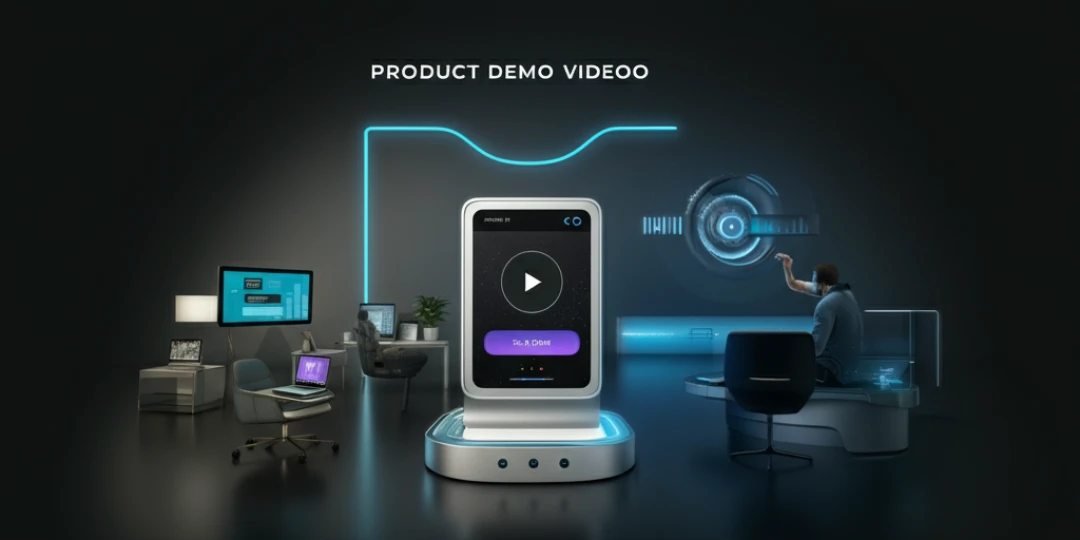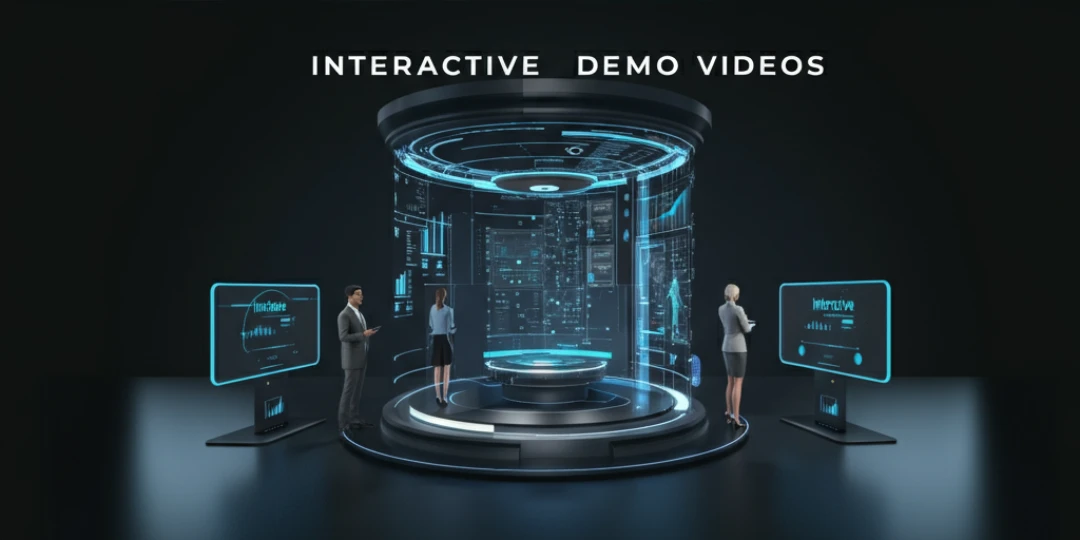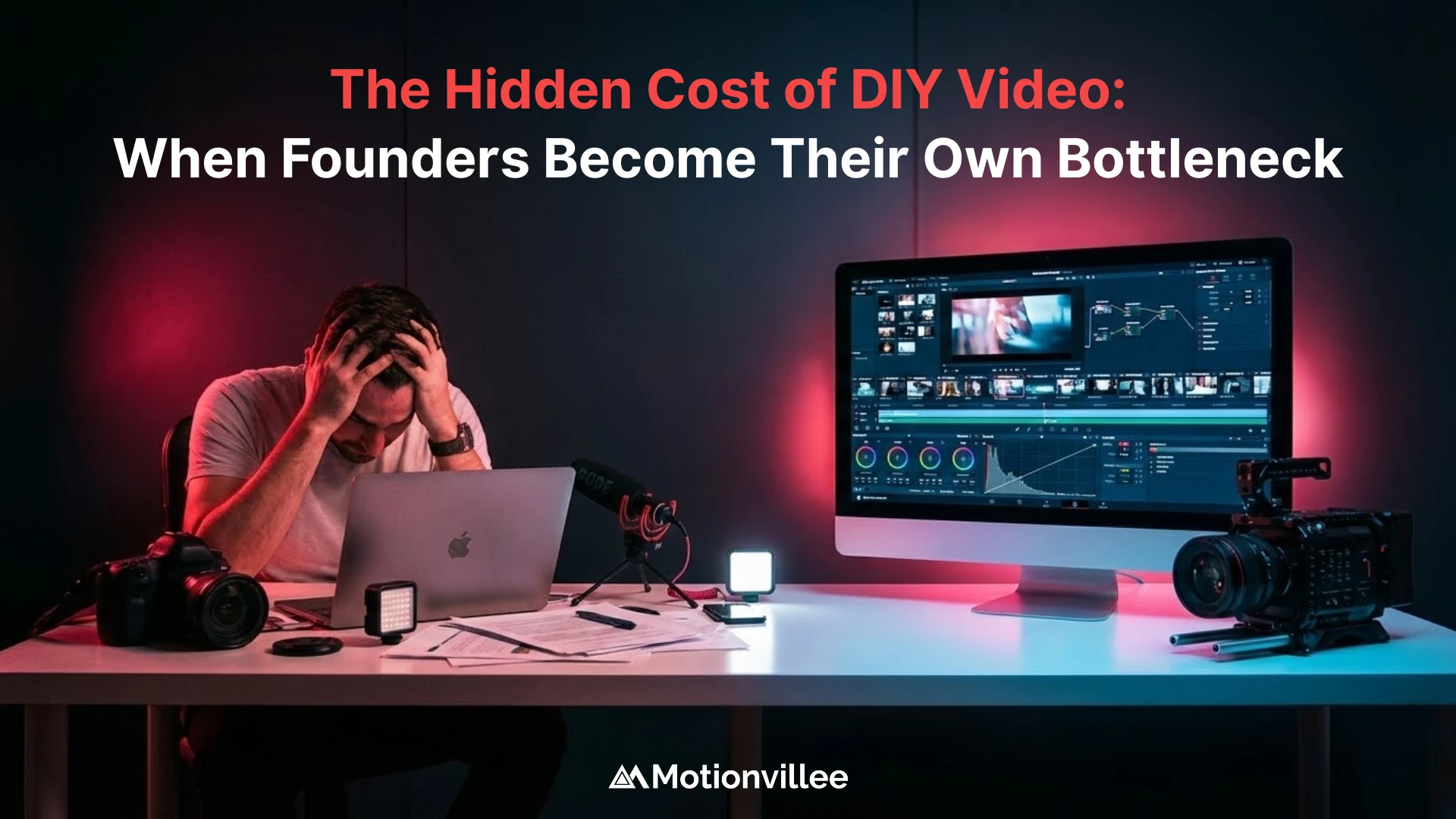When it comes to selling software, clarity is everything. Whether you’re trying to get a new user to sign up or close a deal with a decision-maker, showing how your product works can make all the difference. That’s where product demo videos vs interactive demos come into play.
Both formats help potential users understand what your product does and why it matters, but they do it in very different ways. And choosing the right format can significantly affect your engagement rates, onboarding success, and even conversion metrics.
In this blog, we’ll break down:
- What each demo format is and how it works
- The five key differences between product demo videos and interactive demos
- When to choose one over the other based on your goals
- Common mistakes to avoid when using either format
By the end, you’ll have a clearer understanding of which format supports your product strategy, audience, and growth stage best.

Defining Product Demo Videos and Interactive Demos
Let’s start with the basics. Before comparing formats, it’s important to understand what each type of demo really offers.
What are Product Demo Videos?
A product demo video is a pre-recorded walkthrough of your product or a feature. It’s usually animated or screen-recorded, with voiceover narration, subtitles, and music. The video explains how your product solves a problem, often in 60–120 seconds.
Common uses:
- Sales enablement content
- Homepage videos
- Customer onboarding
- Trade show presentations
Strengths:
- Easy to share and repurpose
- Great for storytelling and brand consistency
- Scales well across channels (YouTube, LinkedIn, websites)

What are Interactive Demos?
An interactive demo lets users try out parts of your product in a guided, clickable environment. It simulates the actual software experience without needing a login or setup.
Common uses:
- Freemium product tours
- Lead qualification tools
- Post-signup walkthroughs
- Personalized onboarding experiences
Strengths:
- Lets users explore at their own pace
- Can be personalized based on use case
- Tracks detailed user interaction for insights

5 Key Differences
1. Product Demo Videos vs Interactive Demos: Level of User Engagement
The biggest difference between product demo videos vs interactive demos is how much your audience gets involved.
Product demo videos are passive. Users sit back and watch. This works well when you want to guide them through a feature or show a clear before-and-after benefit. But there’s no clicking, no input, and no branching paths. It’s a one-size-fits-all experience.
Interactive demos, on the other hand, are designed for hands-on exploration. Users click through steps, make choices, and get feedback based on their actions. That kind of involvement keeps them more engaged and gives them a feel for how the product really works.
Why this matters:
- Passive viewing can be enough during the awareness stage
- Deeper engagement builds stronger interest and memory
- Interactive formats give users more control over their learning experience
2. Customization and Personalization Capabilities
Another major contrast in the product demo videos vs interactive demos debate is how personalized the experience can be.
Product demo videos are typically created for a broad audience. Once produced, they remain static. Everyone watches the same video, regardless of their industry, role, or use case. To customize them, you’d need to produce multiple versions, which increases both cost and complexity.
Interactive demos are built to be flexible. Many platforms allow dynamic paths where users can choose their role (e.g., Sales vs Marketing), their goals (e.g., automate workflows, analyze data), or their tech stack. The experience changes based on these inputs.
Benefits of personalization:
- Higher relevance increases time spent exploring
- Prospects see how the product fits their specific needs
- More targeted data collected on user behavior
3. Product Demo Videos vs Interactive Demos: Data Collection and Analytics
When it comes to measuring performance, there’s a significant divide in product demo videos vs interactive demos.
Demo videos offer basic analytics. You can see how many people watched, how long they stayed, and whether they finished the video. While useful, these metrics don’t show how users interacted with the product or what features caught their attention.
Interactive demos, however, provide a deeper layer of insight. Every click, scroll, and path is tracked. You know exactly:
- What features users explored
- Where they dropped off
- Which user flows performed better
4. Learning Curve and Education Value
A key factor in choosing between product demo videos vs interactive demos is how well they help users understand the product.
Product demo videos are a great starting point for building awareness. They provide a controlled narrative, making it easy to highlight key features, use cases, and benefits. For simple tools or early-stage buyers, this can be more than enough.
Interactive demos are better for deeper learning. Users actually go through the steps, mimic real tasks, and explore specific features at their own pace. This hands-on approach can significantly improve comprehension and retention.
Which format educates better?
- Use video for quick, visual overviews
- Use interactive demos for detailed walkthroughs and self-led learning
- Combine both for a layered education experience
5. Product Demo Videos vs Interactive Demos: Implementation Cost and Flexibility
Cost and flexibility are major decision points in the product demo videos vs interactive demos comparison.
Product demo videos often involve higher upfront production costs. You’ll need scripting, voiceover, animation or screen recording, and editing. Once published, they’re harder to update, especially if the UI changes frequently. Any significant product update could require a full re-edit or re-shoot.
Interactive demos, on the other hand, use tools that allow faster deployment and easier updates. Platforms like Reprise or Walnut let you duplicate flows, edit UI captures, or tweak copy without starting from scratch. This makes them more flexible in fast-moving product environments.
Cost and scale breakdown:
- Videos = High quality, but costly and harder to change
- Interactive = Easier to update, great for agile teams
- Videos scale well for top-of-funnel outreach; interactive demos scale better for mid-to-bottom funnel
When to Use Product Demo Videos vs Interactive Demos
Choosing between product demo videos vs interactive demos depends on your goals, audience, and where users are in the buying journey.
Here’s a quick guide to help decide:
| Use This Format | If Your Goal Is… |
| Product Demo Video | – Build product awareness at the top of the funnel |
| – Deliver a quick overview with strong visuals | |
| – Explain features in a controlled narrative | |
| Interactive Demo | – Allow prospects to explore features hands-on |
| – Personalize the experience based on use case | |
| – Capture in-depth engagement data |
Still unsure? Ask yourself:
- Do we want viewers to watch or interact?
- Do we need analytics beyond views and time spent?
- Is our product changing often, requiring quick updates?
A hybrid approach is often ideal. Start with a short explainer video to grab attention, then let users dive into an interactive demo for a self-guided tour.
Common Mistakes and How To Avoid Them
Even the best formats can fall flat when used incorrectly. Whether you’re working with product demo videos or interactive demos, watch out for these common pitfalls:
- No clear objective:
Choosing a format just because it’s trendy leads to wasted time and budget. Always define what success looks like before producing any demo content. - Lack of mobile optimization:
Many users explore products on mobile. If your video or demo doesn’t load well on smaller screens, it can lead to drop-offs. - Ignoring the data:
Failing to track and analyze engagement means missing out on key insights. Even a basic view or click-through report can highlight areas for improvement. - Overcomplicating the experience:
Interactive demos that require too many clicks or product videos packed with jargon can confuse users. Keep it simple and focused.
Quick tip:
Test your demos across multiple devices, set clear goals, and always measure performance. Avoid trying to explain everything, focus on what matters to your audience most.

Closing Thoughts & Actionable Takeaways
Choosing between product demo videos vs interactive demos isn’t about picking a winner, it’s about knowing when each format works best.
Key takeaways:
- Use product demo videos when you need to educate quickly and control the narrative.
- Choose interactive demos for deeper engagement, personalized walkthroughs, and better data.
- Combining both often delivers the strongest results, starting with a video, then letting users explore.
Each format has its strengths. The real value comes from aligning the format with your user journey and business goals.
Want to learn more?
If you’re looking to create clear, effective demo content that actually helps your audience understand and remember your product, Motionvillee can help. Our explainer videos are crafted to simplify complexity and support your product story with purpose.
Let’s talk, book a free consultation to explore how we can bring your product to life.







